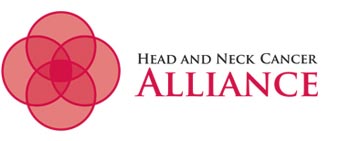
Head and Neck Cancer Awareness Month
April is National Head and Neck Cancer Awareness Month and April 8 – 15, 2018 is National Oral, Head and Neck Cancer Awareness Week.
Head and neck cancer is a term used to describe a number of different cancerous tumors that develop in or around the throat, larynx, nose, sinuses, and mouth. These cancers typically begin in the squamous cells that line the moist surfaces inside the mouth, nose, and throat.
According to the Head and Neck Cancer Alliance (HNCA), an organization dedicated to the prevention, detection, treatment and rehabilitation of oral, head and neck cancer through public awareness, research, advocacy and survivorship, head and neck cancers account for approximately three percent of all cancers in the United States. These cancers are nearly twice as common among men and are diagnosed more often in people over age 50 than they are among younger people.
Fortunately, most head and neck cancers produce early symptoms. Below are some potential warning signs of head and neck cancer. If you experience any of these symptoms, you should alert your doctor as soon as possible.
There are several symptoms of head and neck cancer, including:
– A lump in the neck. Cancers that begin in the head or neck usually spread to lymph nodes in the neck before they spread elsewhere. A lump in the neck that lasts more than two weeks should be seen by a physician as soon as possible.
– Change in the voice. Most cancers in the voicebox cause voice change. An otolaryngologist is a head and neck specialist who can examine your voicebox easily and painlessly.
– A growth in the mouth. Most cancers of the mouth or tongue cause a sore or swelling that doesn’t go away.
– Bringing up blood. Tumors in the nose, mouth, throat, or lungs can cause bleeding. If blood appears in your saliva or phlegm for more than a few days, you should see your physician.
– Swallowing problems. Cancer of the throat or esophagus (swallowing tube) may make swallowing solid foods and sometimes liquids difficult.
– Changes in the skin. The most common head and neck cancer is basal cell skin cancer. Basal cell cancers appear most often on sun-exposed areas like the forehead, face, and ears, but can occur almost anywhere on the skin.
– Persistent earache. Constant pain in or around the ear when you swallow can be a sign of infection or tumor growth in the throat.
At our center, we treat head and neck cancer painlessly and noninvasively with external beam radiation therapy (EBRT). EBRT is an effective treatment for head and neck cancer, working within cancer cells to limit their ability to multiply. During treatment, high-energy X-rays are delivered to the cancer with a linear accelerator (LINAC). The treatment process is painless, safe and treatments take about 10 to 15 minutes. Side effects that can occur may require medication. Most patients return to routine activities immediately after completing treatment. Sometimes a combination of treatments, which may include surgery, radiation therapy and chemotherapy, is the best plan for treating head and neck cancer.
When found early, most cancers in the head and neck can be cured with few side effects. Cure rates for these cancers could be greatly improved if people would seek medical advice as soon as possible. Play it safe. If you detect warning signs of head and neck cancer, see your doctor immediately, and practice health habits which help prevent these diseases.

